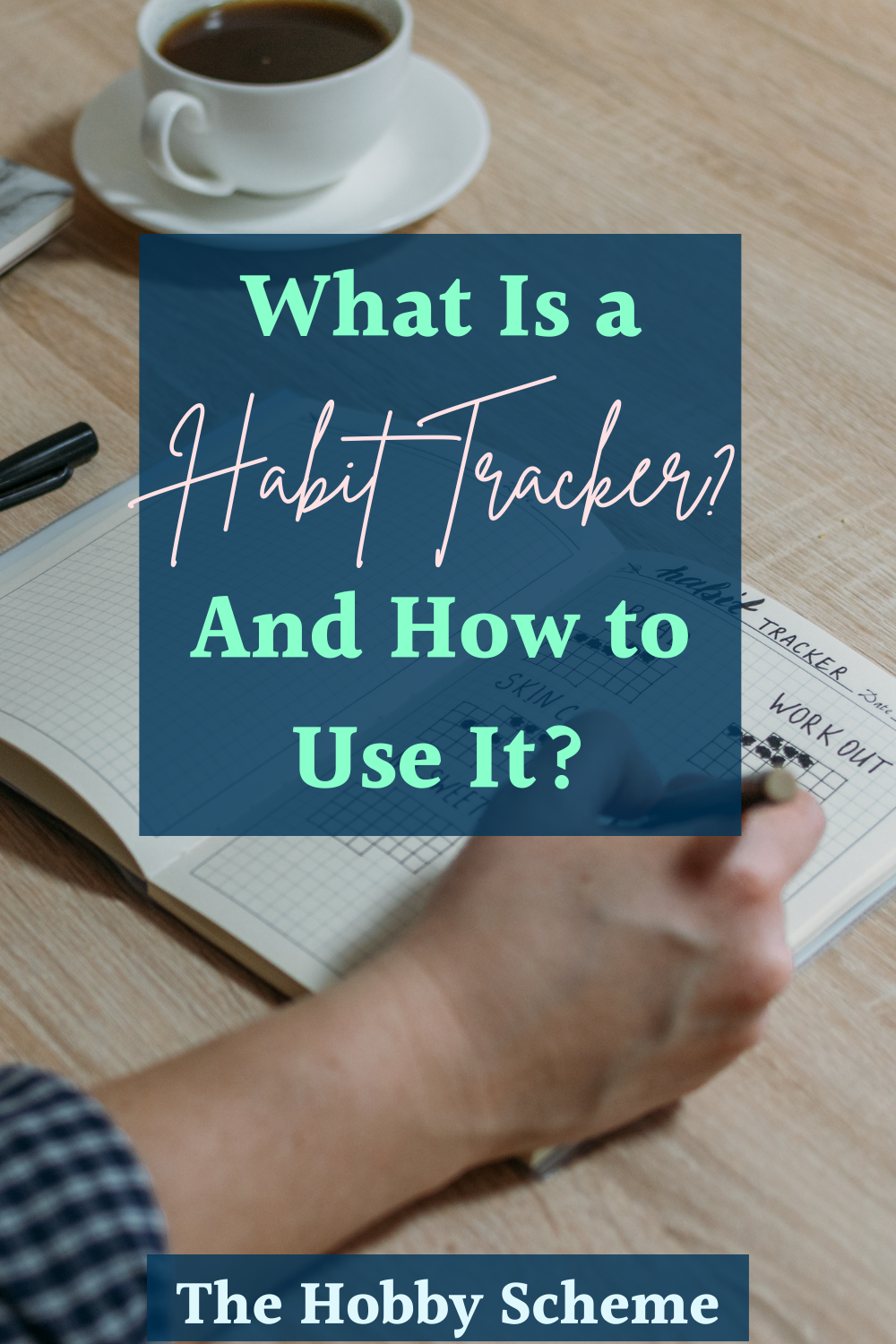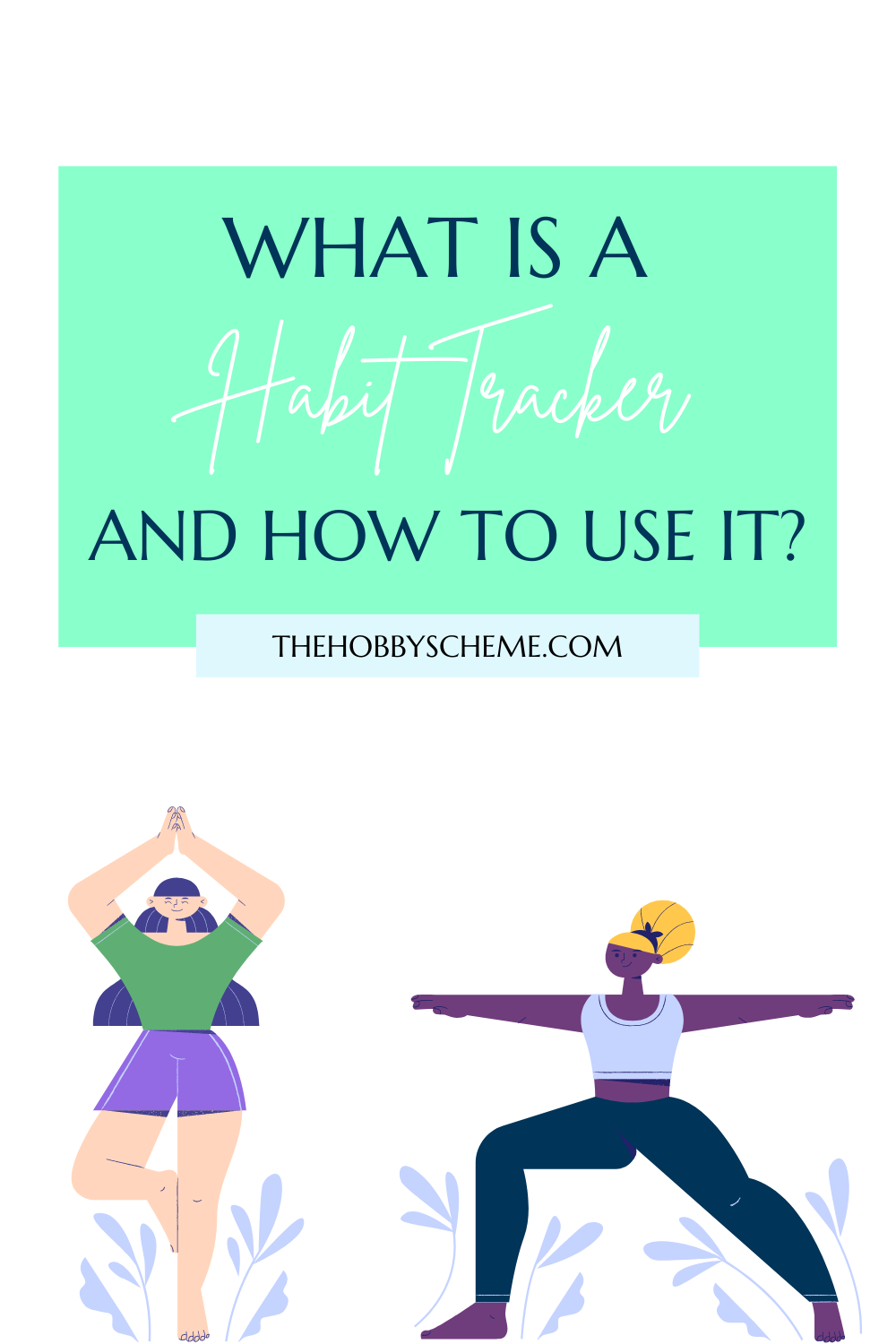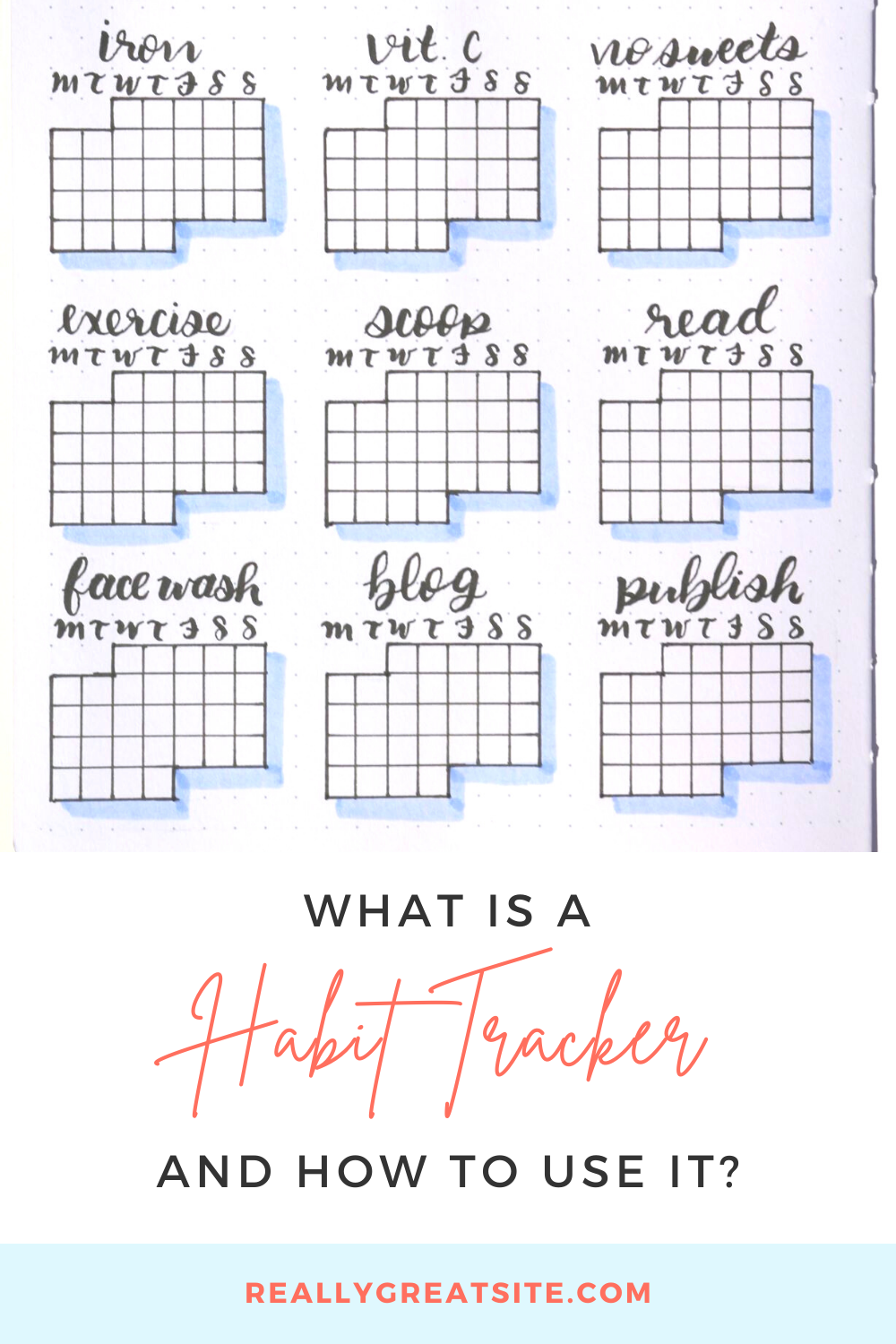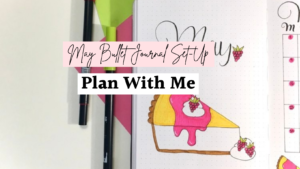Habit trackers are a staple in the bullet journaling community. I know that my bullet journal wouldn’t be complete without it! And a lot of people feel the same way. A habit tracker makes it easy for you to stay on track with your goals and your habits.
When we first start bullet journaling, it can be kind of complicated to figure out how every spread works. Habit trackers are pretty simple once you get to know them. That’s why I’m here! Let me introduce you to habit trackers!
What Is a Habit Tracker? And How Does It Work?
A habit tracker is simply a tool for keeping your goals and habits on track. This tool is meant to provide a reminder and some reinforcement to continue doing those habits.
Okay, let me explain that a little better! A reminder is pretty obvious. When you see which habits you want to track daily, you are more likely to remember to complete them. It’s as simple as that!
The Psychology Behind Habit Trackers…
Now, what I mean by reinforcement gets a little more technical. A habit tracker is linked to what you want to accomplish in a day. And without you knowing, it is using operant conditioning. This word can seem a little scary but it’s actually pretty simple. The principles behind it state that if you add something or take something away based on the behaviour, the behaviour will be encouraged or discouraged.
When it comes to habit tracking, the use of operant conditioning isn’t obvious. So let me explain it!
When you have your habit tracker, you are writing down the things you want to complete for the day. So you feel bad when you don’t complete them. You might feel guilty or irritated because you didn’t follow your own goals for the day. That’s normal! But when you complete your tasks, you alleviate those negative feelings and get a sense of accomplishment instead.
In this case, you are taking away your negative feelings and gaining a positive feeling. Believe it or not, feelings can be motivating! By taking away your negative emotions and gaining positive ones, you are reinforcing that behaviour. See! Simple!
I’ll give you an example. Let’s say you’ve cleaned a room of your house every day this week, you’d probably feel proud and be more motivated to continue. (The clean house is motivating too!)
There is one more element to the habit tracker that is based on operant conditioning. You’d be surprised how motivating it is to see a complete habit tracker compared to an incomplete one. You get to fill out all the squares which make the journal look better. You didn’t put all that work into creating those spreads and layouts just to have the habit tracker make it look bad. Completing the design of your habit tracker is motivating in itself.
Sorry, I went on a little bit of a psychology tangent there! Basically, a habit tracker is a tool to keep you motivated to do your desired habits.
What to Track
Let’s get into it!
What to track can seem simple at first but it has to be tailored to you. If you go around tracking other people’s habits, you’ll eventually get discouraged and stop doing the habits altogether because they don’t work for you.
There are plenty of great habits to start tracking. Here are some for starting your new year! And here are some quick ones to make a difference when you don’t have a lot of time. You’ll never be at a lack of habits to track. It just matters which ones work for you!
How to figure out which habits you should track is the problem!
First, you should think about what you are trying to get out of this habit tracker. Do you want to be healthier? Keep a cleaner home? Work on a certain project? It doesn’t matter what your intention is, but you do need to know what your goals are.
In my bullet journal, I track when I work on my blog. Every once in a while I have a lazy day and I don’t work on it. But my ultimate goal is to have a successful blog, so I want to work on it daily. By adding this habit to my habit tracker, I am reminded to work on it and encouraged to continue doing so.
Once you’ve chosen your goals, you can narrow them down into smaller habits to help you accomplish them.
Ultimately, you can choose to track whatever you want but the habit tracker will work better for you if the habits you track are based on personal goals.
How to Use the Habit Tracker
I know I keep saying that habit tracking is simple but it is once you understand it!
To use a habit tracker, you need somewhere to write down your habits as well as enough space for each day of the month.
Once you have enough space for each day of the month for each habit, you are ready to go! You use the space designated to indicate that you completed that habit on that day.
You can use Xs, dots, a certain colour, or even a pattern to show that you completed the task. As long as you mark that you have done that habit, you can do no wrong!
You don’t have to make a super complicated habit tracker. I’ve said it before and I’ll say it again. All that matters is that it works for you!
Different Styles of Habit Tracker
There are plenty of different design styles for habit trackers. Bullet journalers have been using them for a while and have gotten creative with their layouts. I’ll share a couple with you to get you started!
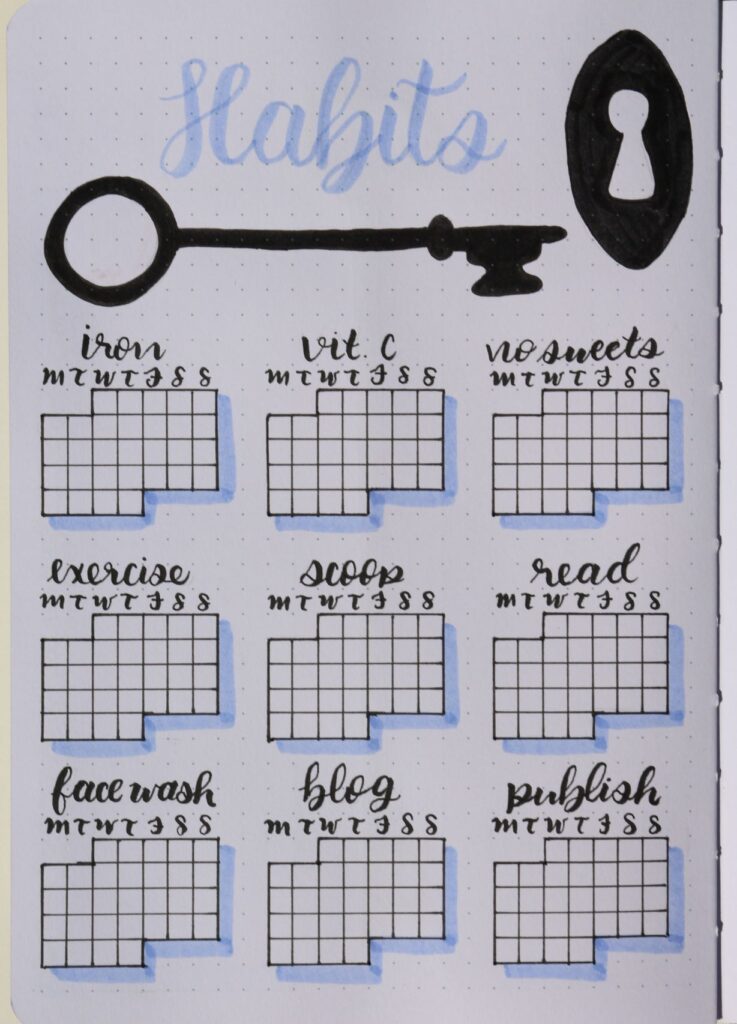
You can have a calendar layout for your habit trackers. This one is my personal favourite! It keeps each of the months separated, so it gives it a clean and pretty look. Sometimes having all the habits stuck together can get a little confusing.
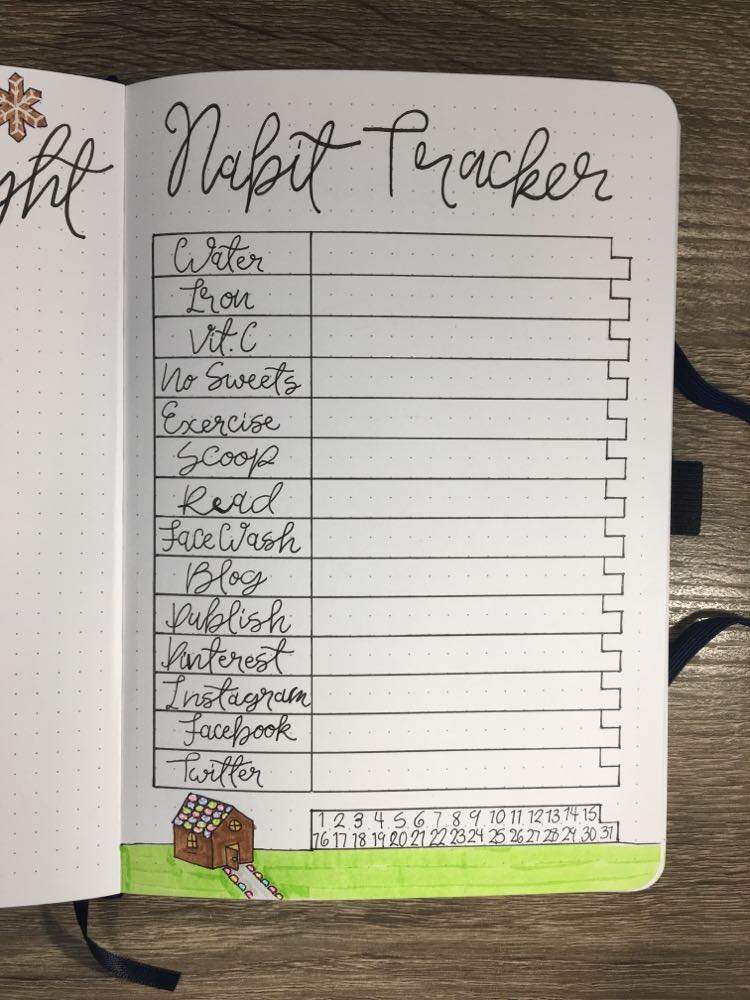
Next, you can have a system where the habits are closer together but they are still separated. This one isn’t as aesthetically pleasing, in my opinion, but it does work. This habit tracker design is simple to make and is amazing when you have lots of habits to track at once. It certainly saves more space than the calendar design.
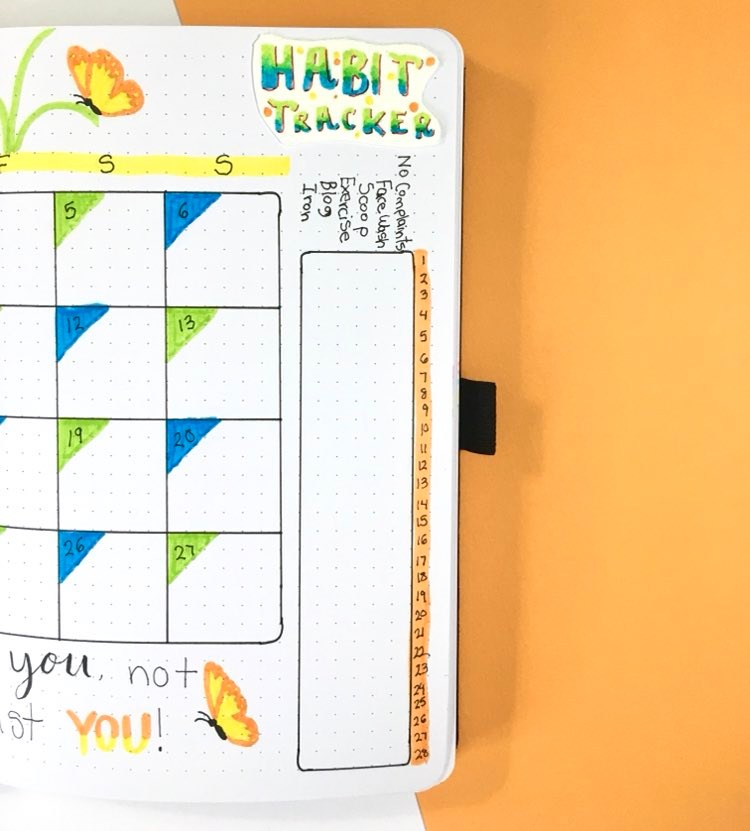
Last but not least, we have the table design. This is the simplest one so far! All you need is a space to put all your habits, the space for tracking, and the number of days that month. This method is pretty good when you have a few habits. It can get confusing when you have too many habits though. I would suggest adding a pale colour in every other row to help distinguish between them.
There are plenty of other habit trackers out there! But the designs above are the most common.
In All,
A habit tracker is a tool to help you accomplish your goals and get on the right track with your habits. It helps to keep you motivated to continue working on your habits. And it is relatively simple! But you do need to put in some work yourself. If your habit tracker isn’t tailored to you, you’ll get discouraged and stop using it. It doesn’t matter how it looks or what habits you track as long as it works for you! Let me know what habits you are planning on tracking in the comments!
Related Articles
